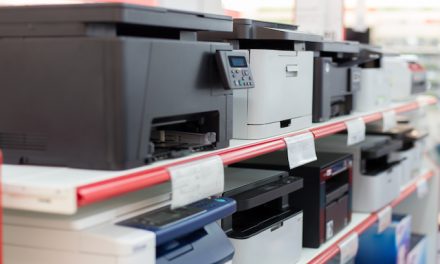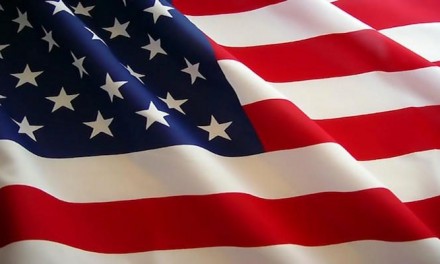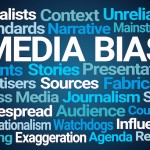Are there really more Americans identifying as Republicans than Democrats now? For decades, more Americans have tended to identify as Democrats than as Republicans, even if the gap has sometimes been small. But in January, Gallup found that Republicans had taken the lead in party ID during the last three months of 2021: On average, 47 percent identified as a Republican or said they leaned toward the GOP, while 42 percent identified as a Democrat or leaned toward the Democratic Party. Given we’re headed into what will be a competitive midterm election year, this finding sparked a flurry of headlines in the days following the release of Gallup’s report.
But it’s still too soon to know whether more Americans are actually identifying as Republicans. Gallup’s finding could portend a lasting change, or it could also be a short-term reaction to an unpopular Democratic president, or it could be an artifact of lower response rates by Democrats frustrated with bad news for their party — or it could relate to all of the above. After all, political science research has found that an individual’s party identification can fluctuate. That said, party ID also tends to be pretty stable in the long run, such that we’d expect changes across the population to be gradual.
To that point, there are two ways of looking at Gallup’s party ID data: quarterly and annually. In the quarterly data, you can see that party ID is volatile. In general, it favors Democrats, but there are numerous spikes in the data as well as instances when Republicans have had the advantage. In the yearly data, meanwhile, it’s easier to see that more Americans have consistently identified as Democrats than Republicans, although there were periods in the early 2000s and early 2010s when party ID was more evenly matched — perhaps not coincidentally, those years featured strong Republican electoral performances — and in 1991 when Republicans even held an advantage, thanks in part to a very popular GOP president in the White House.
And that’s what makes interpreting party ID data so hard. Annual Gallup data suggests that the most recent quarterly numbers might have been a blip and that we should expect Democratic party ID to rebound soon. After all, in the last 30 years, Gallup’s annual data has found, on average, that 47 percent of Americans identified as Democrats versus 42 percent as Republicans (including independents who leaned toward each party). Then again, it’s possible that this quarterly data is pointing to a longer-lasting gain in party ID for Republicans, as was the case in the early 2000s and 2010s. This could have potentially major consequences for the upcoming midterm election, too.
In research published in 2018, political scientists Patrick Tucker, Jacob Montgomery and Steven Smith used longitudinal data from the American Panel Survey to study partisan identification from 2011 to 2016, finding that changes in presidential approval and favorability of the two parties often preceded changes in party affiliation in the short term, particularly among Americans who did not have strong ties to their party. Considering that President Biden’s job approval has suffered in recent months, it could be that the short-term changes we see in Gallup’s data indeed indicate the electorate’s movement away from the Democratic Party.
Along the same lines, Charles Franklin, the director of the Marquette Law School poll, recently analyzed movement in party ID across a number of major pollsters, and he broadly found a decrease in those identifying as Democratic — although not the same degree of swing toward the GOP as in Gallup’s quarterly data. However, it is worth noting that Franklin was looking at party ID that did not include independents that lean toward a party, because many pollsters don’t publish party ID data with leaners.
However, that study by Tucker, Montgomery and Smith also found that changes in party ID tended to revert over time as voters’ evaluations of the parties and the president stabilize, so the initial movement we see in Gallup’s data may not last. In fact, Gallup found the two parties were running close to even in December, perhaps suggesting that the shift toward the GOP was already abating.
This tendency for people to shift their party ID in the short term only to then revert back is evident in the Pew Research Center’s party ID numbers, which are very similar overall to Gallup’s yearly numbers. For instance, between September 2018 and July 2020, Pew found that about one in five Americans in their American Trends Panel made some change to their party identification, but nearly nine in 10 identified or leaned toward the same party in 2020 as in 2018. In other words, nearly half of those who had switched parties ultimately switched back.1
And of course, as is the case anytime we’re talking about polling, there are methodological differences among pollsters that can further muddy the waters of how Americans see themselves in the political landscape. As Marquette Law School’s Franklin noted, differences in question wording can contribute to differences in partisan identification; Gallup’s party ID question asks respondents how they identify “as of today,” for instance, whereas some other pollsters ask how respondents identify “generally speaking.” And in a 1991 study, political scientists Paul Abramson and Charles Ostrom found that from 1952 to 1988, Gallup’s version of the question did produce more volatility in party ID than other pollsters’ versions of this question. That may still be the case, considering that Franklin found smaller shifts among other pollsters’ versions of this question in January.
It’s also possible that the large swing in party ID toward the GOP that Gallup observed could be partly due to Democratic-leaning Americans responding at lower rates. Democrats might have been more discouraged by what’s going on in Washington, what with Biden’s dismal approval rating and Democrats having failed to pass their much-ballyhooed social spending and voting rights legislation. There’s even a term for this — nonresponse bias — and we’ve seen it happen before: Lower response rates among Republican-leaning voters ahead of the 2020 election may have contributed to the polling error that underestimated GOP support. But it’s also possible that some pollsters are weighting their polls in ways that could diminish the impact of nonresponse bias or other short-term factors. For instance, YouGov weights its polls to match the 2016 and 2020 election results, which means that while they also found a Republican-leaning trend in party ID across 2021, the magnitude of that shift was much, much smaller.2
Overall, it’s probably too early to say how much of the Republican shift in partisan identification is real, or how long it will last. However, it’s also not clear whether this particular data point tells us much more about the electorate than we already know from Biden’s job approval, generic congressional ballot polling and other political polls. In their study, Abramson and Ostrom did show that party identification polls were moderately predictive of electoral outcomes for the House and presidency, but direct measures such as the generic congressional ballot and head-to-head polling are still much better indicators of what to expect in elections. All things considered, this may be just one more data point that directs us toward what we already expect: Things are looking pretty tough for the Democrats in November.



















Americans trended toward the Democrats only so long as their media lies did not catch up to THE PEOPLE’s now own opened eyes. The social Pains revealed in the actual incorporation of their policies proposed and put into action by Biden, has become the great awakener and the Great white light of a great American hope that the founders were right after all, and that secular socialism is a one-way road to self-destruction. Trump, in spite of the incessant media attacks and Democrat fake impeachments gave THE PEOPLE a taste of the kind of success that freedom unleashed and unincumbered by government restrictions and controls can bring to a free people, unchained to pursue their own individual happiness that collectively leads to making America great. The proof is indeed in the patriotic pudding, not the Democrat pablum for the masses that Biden and his traitors have been trying to spoon feed and shove down our throats, now being vomited and barfed out more forcibly than a rabid dog hydrophobic dog that retreats from the sight of water. Only the Democrats are returning to their folly, as a dog returns to his vomit. The rest of us American frogs are leaping out of the ever heated Democrat boiling pots of perversions, and are moving on to better things, people, leadership and much cleaner diets of truth.
AND how many of those polled, ONLY have said they ID as republicans now, BECAUSE OF THe utterly shambolic response the left has HAD to
A) our economy
B) vax/mask mandates
C) CRIME CRIME AND CRIME….
NOT because they are actually becoming conservative..
“I didn’t leave the Democrat Party, it left me!” to use a quote from Ronald Reagan is probably what many of these people are feeling. The tradition of being a Democrat through generations has been stood on its ear with the new crop of politicians in the Democrat fold that are out of touch with the rank and file. The strident rhetoric of animosity toward those who disagree, the intolerance to listen to opposing views, the approval of harsh tactics by government to enforce unpopular and possibly unConstitutional mandates, the seeming disregard for the safety of the populace with lax prosecution of crime and the releasing of criminals who commit crimes upon release, the list goes on. These are not the values the the Democrat Party once claimed to stand for. COVID seems to have brought out the worst and the people recognize it for what it is.
Anyone who supports the Democrats are not loyal Americans. The Democrat voters are traitors of the highest degree.
Which makes ME wonder, CAN WE trust those ‘former dem voters’, who now say they are conservative?
People are tired of the hate coming from the democrats. I don’t want this country to be a 3rd world country or a Communist country.
The camouflage is off where the Democratic Party is concerned—their extreme Liberal agenda and their hatred of America is abundantly clear. Any fool can look at Trump’s Presidency and compare it to the current Biden disaster and see which Party is pro-America and which policies are best for the American people—anyone who says they can’t discern the difference has their head in the sand.
Logically, there should be zero support for the Democratic Party, but we know that is not the reality. We keep hoping that the masses will learn.
Too many though, seem too FAR GONE to ever learn.
That is a good thing only problem is the stupid ones will return back to their original upbringing.
The “stupid ones” and the illegal immigrants are still supporting the treasonous, dishonest, destructive, demonic, socialist democrat Party.
The Democrat Party wins most of their followers because they are ill-informed,
low intellect or are servants on the Democrat Party plantation.
Democrat’s propaganda or narrative works on an emotional level,
not on the intellect level.
more Americans identifying as Republicans than Democrats
“It doesnt matter how many people vote, only who counts them.” – Stalin
Since the Spineless RNC has done nothing to correct this I wouldn’t think much of who Americans are identifying as.
Just look at the democrat party of today. Former democrat Zell Miller gave a speech at the 2004 republican convention describing what has happened to the democrat party and why he left it. Even though the democrats leaned toward the left and have a nasty streak of racism in them, for the most part they were NOT communist. Harry S. Truman sent American troops to Korea to stop the communist invasion of South Korea. JFK made the USSR get their nukes out of Cuba or risk WW3. As bad as LBJ was, he did send 500,000 US military people to stop the communist from taking over South Viet Nam, even though he failed. Even Jimmy Carter, who used to be the worst president in American history, made feeble attempts to stand up against the USSR. The democrat party has been conquered by communist and is now the dummycrat party. Just look at the way they NOW say Stalin was a great man, along with Castro, Ho Chi Minn, Kim Ill Sung, and Mao Se Tung. The only reason the escapee from a Delaware nursing home is talking big manure to Putin is because Putin is threatening Biden’s financial situation, which he got by black mail. Otherwise, Biden doesn’t give a hoot about Ukraine. AND THE DEMOCRATS ARE STILL RACIST!!!!
YEa, the dems of LBJ’s time, wouldn’t EVEN RECOGNIZE what the Dems have now become..